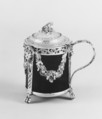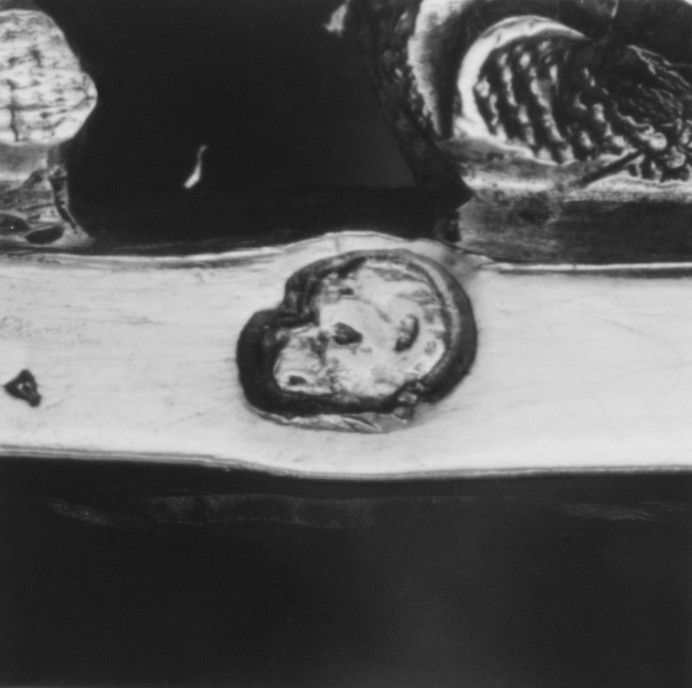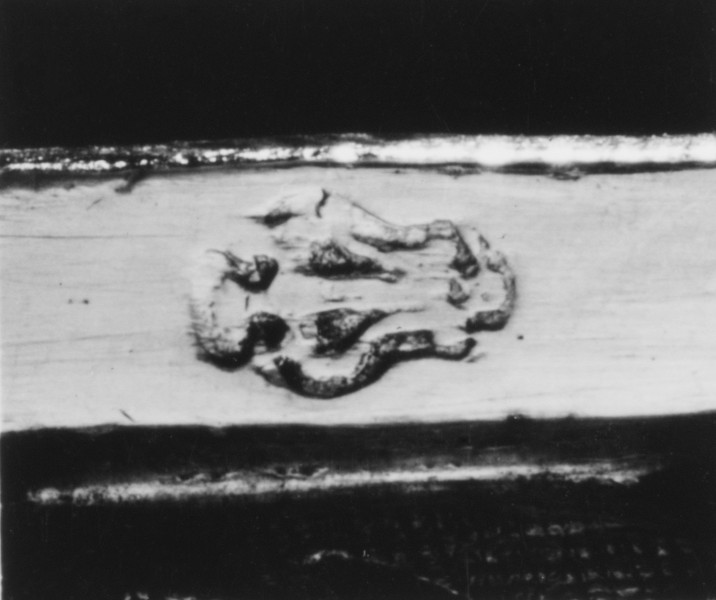Mustard pot
Maker attributed to: Pierre-Nicolas Sommé
Not on view
During the eighteenth century, mustard was served at the table either as a dry powder or mixed with vinegar to form a paste or sauce. The dry powder was contained in a caster left un-pierced or fitted with a removable sleeve that blocked the holes. Most of the mustard pots in the Museum’s collection were made to serve the condiment mixed into a sauce; they take the form of a small jug barely distinguishable from a lidded milk jug with a spout. Some lidded pots have an opening to accommodate a small spoon.
The early eighteenth-century pots are cylindrical in shape, often with typical cut card decoration and applied lambrequins. By the 1740s, the rounded shapes of the Rococo with swirling forms and floral ornament predominate. During the neoclassic period mustard pots frequently take the form of a silver open-work frame decorated with typical antique motifs with a blue glass liner as seen here.
By the mid-18th century, mustard pots were also made in porcelain. Indeed, the journals and inventories of the Paris luxury dealers, the marchand merciers, itemize many more mustard pots made of ceramics than of silver, and often were listed as having a plateau and a spoon. Rarely do these survive in silver, although some precious metal examples had a matching plateau as recorded in the account books of the marchands merciers.
Daughter of one of the founders of the Weyerhaeuser Timber Company, Catherine D. Wentworth (1865–1948) was an art student and painter who lived in France for thirty years. She became one of the most important American collectors of eighteenth-century French silver and on her death in 1948 bequeathed part of her significant collection of silver, gold boxes, French furniture, and textiles to the Metropolitan Museum. The collection is particularly strong in domestic silver, much of it provincial, and includes several rare early pieces.
Due to rights restrictions, this image cannot be enlarged, viewed at full screen, or downloaded.
This artwork is meant to be viewed from right to left. Scroll left to view more.






